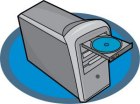Navigating on the open water away from land has always been challenging and very exciting. Boating can be a very rewarding experience provided your boat features the proper tools to provide the complete safety. Good quality marine navigation electronic equipment on board ensures faster and safer boating.
It is recommended to make sure that, the boat is equipped with certain marine electronics. The minimum requirement for safety is to at least have a VHF Marine Radio and a compass before leaving the shore. Other desirable electronic devices include a GPS plotter, fish finder or depth sounder, radar, and auto pilot. Other more sophisticated but nice to have items include an Automatic Identification System and a networked navigation system
Marine navigation electronics equipment operation and uses are discussed below:
Auto Pilot: It is a highly recommended tool for mariners set to go on a long voyage. Auto Pilot helps to steer the boat automatically and thus, relieves the person at the helm from fatigue. Auto Pilot is of great help for those that troll while fishing controlling the boat way automatically, allowing the captain to join and enjoy the fishing. This tool is very helpful, as it allows to save fuel by maintaining the boat on a steady heading.
Fish finder: Those who fish for pleasure or hire enjoy the help provided by a good fish finder. The fish finder operates using SONAR. In principle, the sonar works by sending a signal down trough the water column until it strikes and object with ample mass to return a signal to the devise, thus rendering an image on the screen. Thereby, showing the depth of the fish relative to bottom structure. If a fish finder is not desired then a depth sounder with a digital readout is a good option, being cheaper.
Automatic Identification System: It is considered an important electronic tool for marine navigation. It provides other boats with your vital information as well as their information to you such as the exact position of the boat, longitude and latitude, Time stamp, Rate of turn, Course over ground etc. While the boat is on its way, the AIS shows the above data every 2 to 10 seconds, whereas when the boat is anchored, the information is shown every 3 minutes. Apart from providing the above-mentioned information, it also provides information about other boats or ships concerning their dimension, location, and type of the boat or ship. It is the comprehensive electronic instrument for collision avoidance.
EPIRB: The Emergency Position Indicating Radio Beacon (EPIRB) also known as distress radio beacon is a transmitter, which helps rescue services to locate boats in distress. The transmissions are rebroadcast from satellites around the world to the various rescue services. Watercraft operators wishing to have an EPIRB must use a digital 406MHz unit. The International Copas-Sarsat Satellite System stopped monitoring for all but 406MHz signals for distress alert and location data for rescue operation throughout the world..
GPS Plotter: The GPS system now takes over the duty of the old Loran navigation system. GPS signals are broadcast from satellites all over the world that are maintained by the US government. GPS can be read in digital or map format. The preferred method is on a plotter that is loaded with digital maps of the area you are boating in. Most new VHF radios now have the capability to broadcast your location with a distress signal if connected to a GPS
Saturday, March 13, 2010
Subscribe to:
Post Comments (Atom)





No comments:
Post a Comment